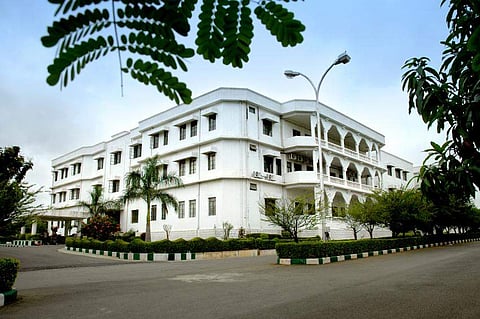

The Electrochemical Energy Storage Lab at the Indian Institute of Technology Hyderabad (IITH), has developed a 5V Dual Carbon Battery utilising self-standing carbon fibre mats as both electrodes - cathode and anode.
The breakthrough model, developed by a team led by Dr Surendra Kumar Martha, eliminates the requirement of toxic, costly, and heavy transitional metals.
This more sustainable and low-cost Dual carbon battery may find potential uses in high-voltage applications, sophisticated battery-run medical devices, regenerative braking systems in electric vehicles, and stationary grids.
While rechargeable Lithium-ion batteries (LIBs) are projected to meet future electric mobility, electric aviation, and stationary grid energy storage targets within 2030, they require toxic and costly metals like cobalt, nickel, and manganese, for functioning.
Moreover, geologically unsymmetrical distribution of lithium and cobalt along with geopolitics and unethical child labour centred on mining, causes rampant fluctuations in raw material cost. It affects the market price stability of large LIB packs used in electric vehicles.
The novel dual carbon battery developed by IITH, consists of zero-transition metal that is environmentally benign. It may cut down the overall battery cost by 20-25 per cent and is expected to curb the unpredictability in market price.
The use of ubiquitous carbon as electrode active material as well as current collector, replacing heavy metals, brings in the aspects of lightness and flexibility. The fabricated 5.0 voltage cell, with nominal voltage application of 4.6 V, provides an energy density of 100-watt hour per kilogram approximately and can be extended up to 150- watt hour per kilogram with further modifications.
The research team believes that developed cells may find potential uses in high voltage applications, sophisticated battery-run medical devices, regenerative braking systems in electric vehicles, and stationary grids.
Dr. Surendra Kumar Martha, said, "The study will be extrapolated to push the energy density limits further, and their broad vision includes introducing the dual carbon system as a cheaper LIB alternative to the Indian Market."
The research for the novel dual carbon battery was carried out by Shuvajit Ghosh and Udita Bhattacharjee, PhD students at IIT Hyderabad, under the supervision of Dr. Surendra K. Martha, in collaboration with Oak Ridge National Laboratory, USA, and Naval Materials Research Laboratory, Mumbai. Naval Research Board (DRDO) supported the project.
